| Review Questions for Unit CE 6 in Fasttrack Civics - American
Constitutional Government Questions about the Constitution's division of national and state powers: 1. What document gives the basic design plan for the American government and lists the powers of the national government? (Answer choices: Declaration of Independence, U.S. Constitution, Emancipation Proclamation.) 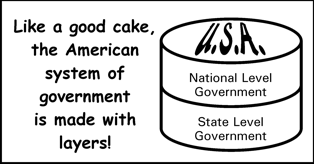 2. What is the term for the design of government illustrated in the picture above, which is part of the basic plan set up by the Constitution? (Answer choices: separation of powers, federalism, checks and balances.) Questions about the Constitution's plan for three branches of the national government: 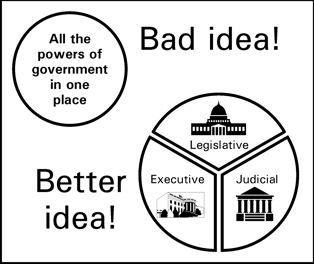 3. What is the structure or design plan in the Constitution that the cartoon above is arguing in favor of? (Answer choices: separation of powers, federalism, checks and balances.) 4. The branch of government mainly responsible for passing laws, approving budgets, and approving appointments of officials is the _____________ branch. (Answer choices: legislative, executive, judicial.) 5. Which branch of government is mainly responsible executing the laws, preparing budgets, administering government agencies, and appointing officials? 6. Which branch of government is mainly responsible for interpreting the laws and holding trials of legal cases? 7. Which branch of the national government is the U.S. Congress in? 8. Which branch of the national government is the president the head of? 9. One of the jobs of the president is to prepare the _________ budget, or spending plan, for the U.S. government. (Answer choices: weekly, monthly, annual.) 10. The Supreme Court is in which branch of the national government? 11. The Supreme Court hears important legal cases, and has the power of "judicial review." That means the Supreme Court has the power to declare a law ____________. (Answer choices: unwise, bad policy, unconstitutional.) Questions about how the Constitution keeps the branches from abusing power:  12. The picture above is demonstrating the principle in the Constitution known as ________________, which is designed to stop any part of the government from abusing power. (Answer choices: federalism, separation of powers, checks and balances.) 13. List two powers the legislative branch has over the executive branch. 14. List two powers the legislative branch has over the judicial branch. 15. List two powers the executive branch has over the legislative branch. 16. The president, in the executive branch, holds the power to ____________ federal judges, who are in the judicial branch. (Answer choices: nominate, remove, impeach.) 17. The judicial branch has the power to ______________ a law passed by Congress. (Answer choices: veto, declare unconstitutional, revise and rewrite.) 18. What power does the judicial branch have over actions of the president in the executive branch? Questions about the lawmaking by Congress: 19. The U.S. Congress is a bicameral legislature. What does the word bicameral mean? 20. Which part of Congress has 100 members, two from each state? 21. Which part of Congress has 435 members, with the number from each state proportional to the state's population? 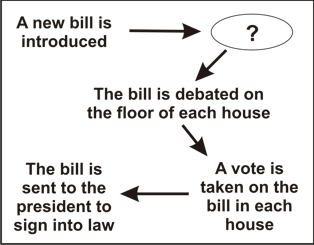 22. What step is missing in the chart shown above of the basic steps involved in making a new law? 23. In the U.S. Congress, can a bill become law if it is only passed by one house? 24. Congress can only make laws on matters allowed to it by the Constitution. These powers may be either expressed powers that are specifically listed, or ______________ powers. (Answer choices: borrowed, pretend, implied.) Questions about the role of the president in policymaking: 25. Presidents can influence the lawmaking process. For example, they give a speech to Congress each year and often propose new laws and policies. What is that speech called? 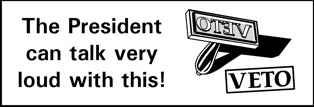 26. The cartoon above is referring to the power that allows presidents to _____________. (Answer choices: appoint officials, block a proposed law, call for an investigation.) 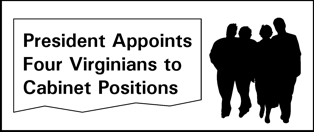 27. The news headline above shows one of the ways the president can influence policymaking. What is the "Cabinet" referred to in the headline, and what do its members do? 28. The Constitution makes the president the Chief Executive of the national government. But he or she has many other roles, including ____________-in-chief of the nation's armed forces. (Answer choices: general, captain, commander.) 29. What does it mean to describe the president as the nation's "Chief Diplomat"? 30. The president represents ______ of the nation's citizens, not just those who voted for him or her. (Answer choices: few, many, all.) Copyright 2007, 2015 by David Burns All rights reserved www.fasttrackteaching.com/civics |